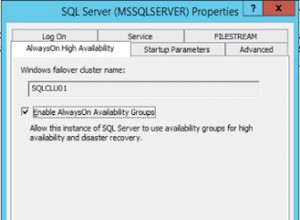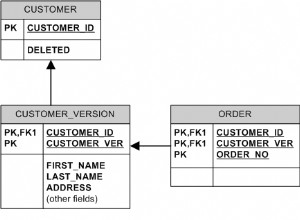Non hai davvero bisogno di un plug-in per questo, potresti facilmente creare qualcosa di simile usando jQuery per effettuare chiamate AJAX a un feed MySQL PHP
Crea uno script per effettuare chiamate AJAX ricorrenti utilizzando setTimeout() e quindi aggiungi i nuovi risultati trovati al contenitore del feed utilizzando .prepend()
HTML
<html>
<head><title>Tweets</title>
<script type="text/javascript" src="http://ajax.googleapis.com/ajax/libs/jquery/1.4.2/jquery.min.js"></script>
<style>
#tweets {
width: 500px;
font-family: Helvetica, Arial, sans-serif;
}
#tweets li {
background-color: #E5EECC;
margin: 2px;
list-style-type: none;
}
.author {
font-weight: bold
}
.date {
font-size: 10px;
}
</style>
<script>
jQuery(document).ready(function() {
setInterval("showNewTweets()", 1000);
});
function showNewTweets() {
$.getJSON("feed.php", null, function(data) {
if (data != null) {
$("#tweets").prepend($("<li><span class=\"author\">" + data.author + "</span> " + data.tweet + "<br /><span class=\"date\">" + data.date + "</span></li>").fadeIn("slow"));
}
});
}
</script>
</head>
<body>
<ul id="tweets"></ul>
</body>
</html>
PHP
<?php
echo json_encode(array( "author" => "someone",
"tweet" => "The time is: " . time(),
"date" => date('l jS \of F Y h:i:s A')));
?>




